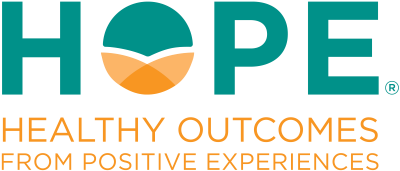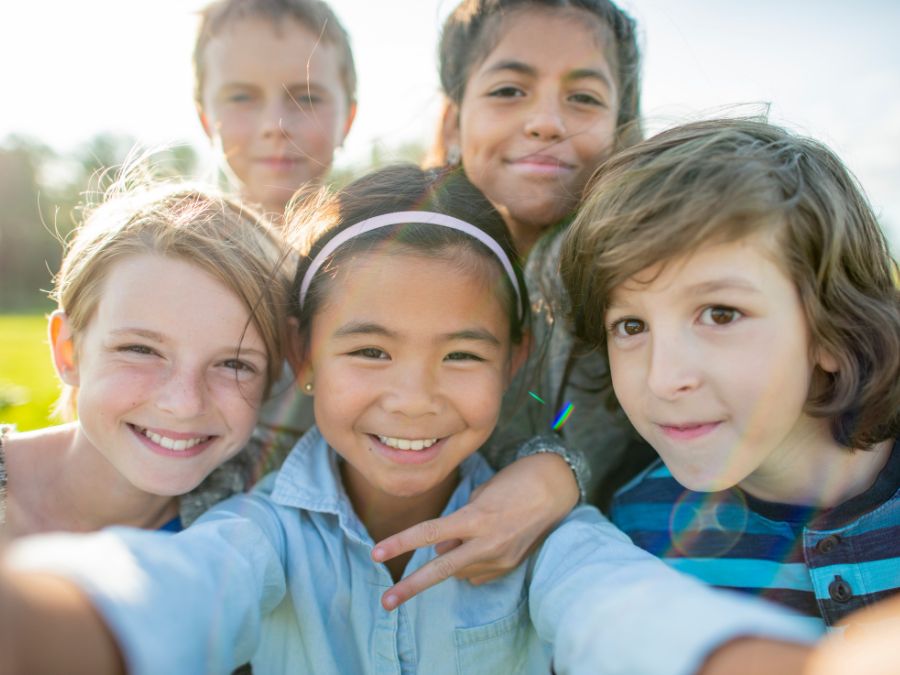
Free, actionable resources on the HOPE framework
So you have completed your first training on promoting positive childhood experiences (PCEs) using the HOPE framework, now what? Many child- and family-serving professionals and organizations leave a HOPE training feeling energized and wanting to practice PCEs in their work. From the direct service-level to the organizational- and policy-level, there are a lot of ways to incorporate meaningful, strength-based changes that benefit children and families. When going through the first steps towards implementing the HOPE framework, knowing what resources you can use is the key to success.
The HOPE National Resource Center offers a number of actionable resources on how to practice the HOPE framework in your work. The HOPE framework is a flexible, customizable model, and we understand that each community priorities their unique needs, goals, and resources. We created (and continue to create) free, downloadable resources that guide professionals and organizations through the thought process of what will work best for the children and families in their community. From our resources, you can learn about your community’s needs and goals, analyze your practices and policies that hinder or help their goals, and how to successfully implement positive changes using the HOPE framework.
Start implementing the HOPE framework with these top resources
The resources below will help you start implementing the HOPE framework in your work:
HOPE one and two pagers
- These informational pagers share the mission of the HOPE National Resource Center and the basics of the HOPE framework. These short documents are great to share with the leaders in your organization to gain their support.
HOPE key terms and phrases
- This resource provides definitions for key phrases to better understand the HOPE framework. You can share this handout during your own HOPE trainings to help people understand what HOPE is all about.
The Four Building Blocks of HOPE
- This handout details the HOPE framework, centering on the Four Building Block of HOPE and shares examples of how you can promote access to them for children and families in your community.
Four ways to assess positive childhood experiences
- This handout shares the four research-informed methods to assessing and incorporating positive childhood experiences (PCEs) in your work, including standardized and conversational methods:
- Positive Childhood Experiences Scale
- Benevolent Childhood Experiences Screener
- The Four Building Blocks of HOPE
- Narrative therapy techniques
10 ways to promote positive experiences
- Positive childhood experiences (PCEs) have the power to build resilience and celebrate children and families’ inner strength. This resource provides 10 ways families and professionals can practice PCEs to give children memories of love and support.
HOPE-Informed screening and assessments
- This resource provides simple guidance to direct service professionals around delivering these tools in a HOPE-Informed way, from preparing the family for the screen or assessment through delivery and wrap-up. screenings and assessments throughout the entire process.
HOPE-Informed checklist of decision making
- This resource is a simple checklist that walks you through assessing if the decision you are making, policy you are creating, or tool you are considering is aligned with the HOPE framework.
- This simple checklist walks you through assessing if the decision you are making, policy you are creating, or tool you are considering is aligned with the HOPE framework.
HOPE-Informed supervision and leadership handout
- Through collaboration with HOPE Facilitators, we created this handout that walks leaders and supervisors through assessing their organization’s implementation of the HOPE framework. This resource can be paired with HOPE-Informed Checklist for Decision-Making.
HOPE as an anti-racism framework in action
- This guide walks you through the process of thinking about policy and practice changes from an anti-racism, HOPE-Informed lens. This resource provides two case studies in early childhood education and pediatrics settings to guide you through the process of reviewing the data, engaging with your community(s), and prioritizing and making changes.
Promoting PCEs for children and youth who are transgender and non-binary
- Those who identify as transgender (or trans) and nonbinary, too, need the same positive childhood experiences (PCEs) as all youth and children. This resource provides 10 ways to promote PCEs for trans and non-binary children and youth.
How can we help you?
The HOPE National Resource Center offers a variety of training opportunities on the HOPE framework including online, self-paced courses, presentations and workshops, individual- and organization-level certification programs, and a network of certified HOPE trainers from around the world. If you have any questions, please contact us.


